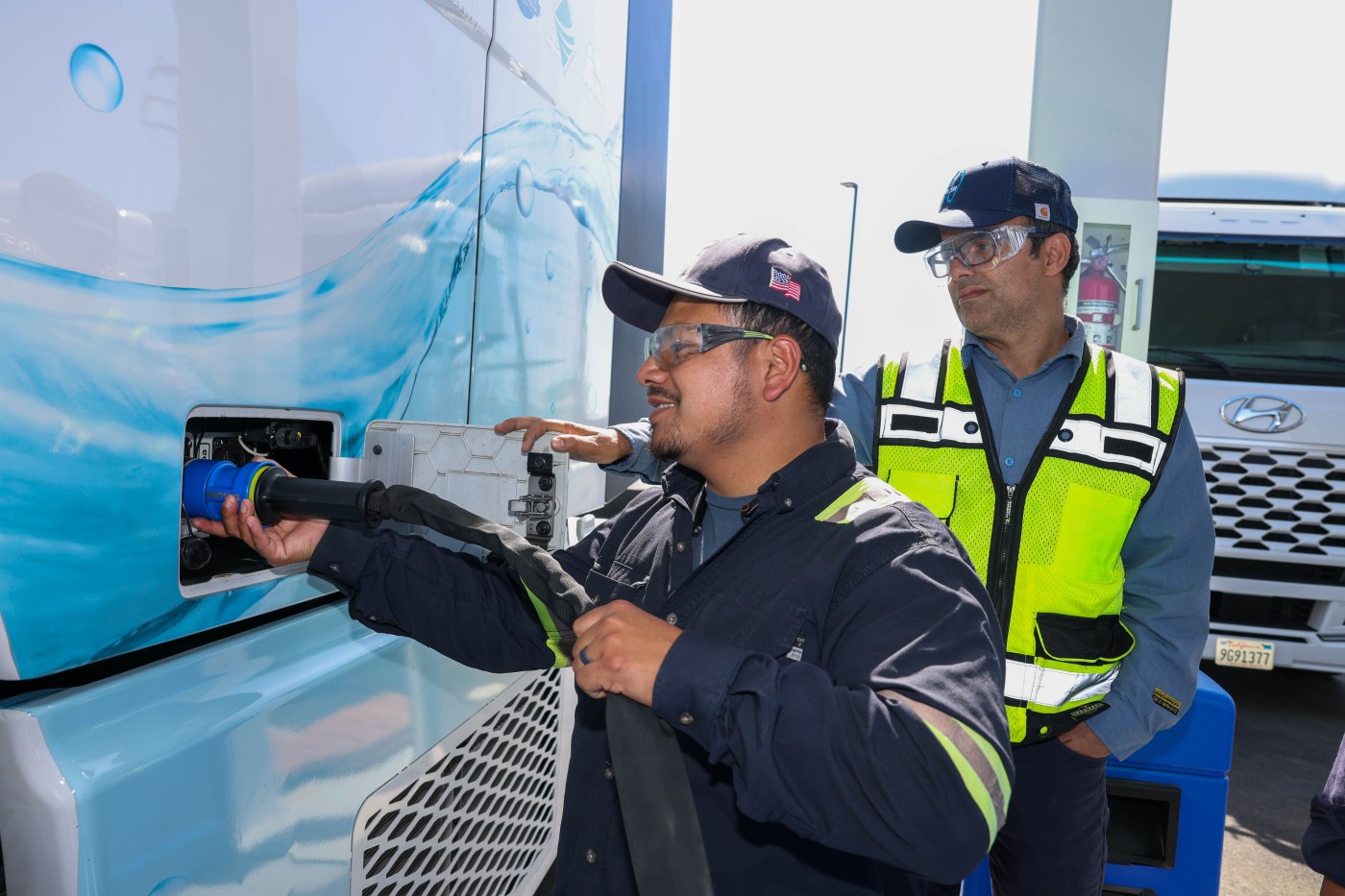Not everything can run on batteries.
To reduce reliance on fossil fuels in industries where electricity is impractical, unreliable or too expensive, California is building a massive “hydrogen hub” to generate a steady supply of an alternative fuel with no carbon emissions — bringing us closer, say advocates, to a completely green future.
“It’s the beginning of the investment that must be made if we are to meet our zero-emission policy goals,” said UC Irvine engineering professor Jack Brouwer, director of the university’s Clean Energy Institute and an interim director for business development on the hub’s leadership team.
California’s selection as a national hub by the U.S. Department of Energy, announced last fall and formalized in a $1.2 billion contract signed this month, launches a long and multiphased process to create the best hydrogen projects — from design and development to permitting, financing and construction.
The hub’s 37 different projects will focus on long-haul trucking, heavy cargo shipping, power generation and aviation, according to the Alliance for Renewable Clean Hydrogen Energy Systems, the public-private partnership managing the hub, which includes the University of California.
While the specific projects will not be announced until August, several major efforts will likely be centered in the East Bay, where work is already underway at the Port of Oakland to replace diesel-powered trucks and cargo-handling equipment with hydrogen-fueled equipment.
The $1.2 billion in federal funding represents only part of what will be a massive $12 billion endeavor. Industry has promised up to $9 billion and the state will add another $2 billion. The government funds will serve as seed money to build a new infrastructure, attract private investors and subsidize new projects until they scale up and become less expensive.
Most of the funds will go to build pipelines, hydrogen-powered trucks and buses, fueling stations and other facilities. About $30 million is currently being spent on planning.
“It’s an investment in the infrastructure needed to deliver hydrogen at a cheaper price — and thus compete against, and ultimately beat out, fossil fuels,” said Brouwer, who helped write the state’s proposal to the U.S. Department of Energy.
Hydrogen is the most abundant element in the universe. And unlike gas and oil, hydrogen gives off no greenhouse gases when it burns. It can be stored as a liquid or gas.
But it is not without controversy.
Making user-friendly hydrogen costs a lot of money. It relies on a technique called electrolysis, which uses electricity to split water molecules into oxygen and hydrogen.
For most things, direct electrification is much more affordable and efficient, said David Reichmuth, a senior engineer with the Union of Concerned Scientists’ clean transportation program.
“For those applications where electricity is more difficult, or just won’t work, then hydrogen is an option,” he said. “But it’s going to cost more and be less efficient than just plugging something in.”
And batteries keep improving, note environmentalists.
How hydrogen’s electrolysis is made determines how “green” the process is. If it’s made using natural gas, it only adds to the problem, said Woody Hastings, energy program manager for The Climate Center, a Sacramento-based environmental think tank. It shouldn’t divert electric power that could otherwise be used to run a vehicle or home, he said.
For technical reasons, hydrogen projects need to be located near users, and produce energy at the same time as clean sources, said Hastings.
As record-breaking heat, drought and wildfires batter the nation, the Biden administration created the $7 billion U.S. Regional Clean Hydrogen Hubs Program to build a national clean hydrogen network across America to decarbonize hard-to-electrify sectors of the economy, like heavy-duty transportation.
The goal is to boost the output of clean hydrogen fivefold — up to 10 million metric tons by 2030 and 50 million metric tons by 2050.
The effort represents “one of the largest advanced manufacturing investments in the history of this nation,” said President Biden, when announcing the awards in Philadelphia last year. The total investment will reach $50 billion if private corporate investment is included, he said.
California and Texas, among more than 30 applicants for funding, will each receive a total of $1.2 billion. Pennsylvania, Oregon and a dozen other states also received support.
The effort will help California inch toward its 100% clean energy goal, said Angelina Galiteva, CEO of the hydrogen alliance. The state is mandated to reach so-called carbon neutrality by 2045, meaning it will remove as many carbon emissions from the atmosphere as it emits.
Already, a hydrogen project at the Port of Oakland is replacing diesel-powered cargo-handling equipment with hydrogen fuel cell equivalents. Electrification of this equipment will reduce smog and carbon pollution from cargo handling equipment, according to the port.
Related Articles
Joby Aviation takes 523-mile hydrogen-electric flight above Monterey County
California 1st state to get federal funds for hydrogen energy hub
World’s first hydrogen-powered ferry to operate in San Francisco Bay
Electric flying taxi firm preps aviation web to slash Bay Area commutes
Solar window company decides to place its USA headquarters in San Jose
Big-rig trucks are being serviced at the first commercial hydrogen fueling station in the nation, also at the port. Compared to electric trucks, hydrogen-fueled trucks can carry more cargo and heavier loads, according to Mary Nichols, the former chair of the California Air Resources Board.
Hydrogen will also help replace natural gas at electricity-generation plants. The Northern California Power Agency, located in Roseville, aims to use hydrogen as a substitute fuel at its plants, generating electricity when solar, wind and batteries aren’t enough. In Los Angeles, a station of the Department of Water and Power is being updated with hydrogen-capable turbines.
The state will still expand electricity to power almost everything in the state, said Galiteva.
But hydrogen can do some industrial tasks that electricity can’t. It will fill in the gaps.
“We’ve been racking our brains and saying ‘Okay, we can get to 80%, maybe 85%.’ But to get those last percentages — across the board and across the economy — we need a carbon-free fuel,” she said. “And how do we get that fuel in a way that makes economic sense?”
“Hydrogen was the missing piece,” said Galiteva.












